 W
WThe Adventures of Dick Cole was a 1940s comic book series, created by Bob Davis. It was published by Novelty Press, and later, Star Publications. Dick Cole is a heroic cadet at the fictional Farr Military Academy. The character was introduced in the "Origin of Dick Cole," in the first issue of Novelty Press' Blue Bolt Comics.
 W
WArchibald Andrews, created in 1941 by publisher John L. Goldwater and artist Bob Montana in collaboration with writer Vic Bloom, is the main character in the Archie Comics franchise, including the long-running Archie Andrews radio series, a syndicated comic strip, The Archie Show, Archie's Weird Mysteries, and Riverdale. He is the rhythm guitarist and one of the three singers of the fictional band The Archies.
 W
WBlackhawk was a 1950 ABC radio series adapted from the long-running Blackhawk comic book about the team of adventurous World War II aviators.
 W
WBlondie is a radio situation comedy adapted from the long-run Blondie comic strip by Chic Young. The radio program ran on several networks from 1939 to 1950.
 W
WBuster Brown was a comic strip character created in 1902 by Richard F. Outcault. Adopted as the mascot of the Brown Shoe Company in 1904, Buster Brown, his sweetheart Mary Jane, and his dog Tige, were well known to the American public in the early 20th century. The character's name was also used to describe a popular style of suit for young boys, the Buster Brown suit, that echoed his own outfit.
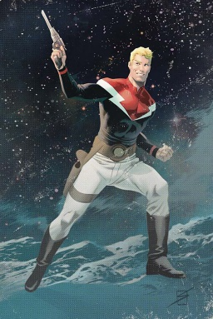 W
WFlash Gordon is the protagonist of a space opera adventure comic strip created by and originally drawn by Alex Raymond. First published January 7, 1934, the strip was inspired by, and created to compete with, the already established Buck Rogers adventure strip.
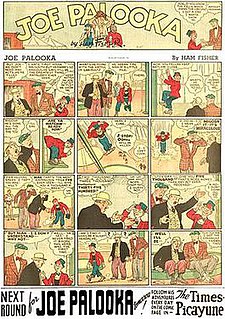 W
WJoe Palooka is an American comic strip about a heavyweight boxing champion, created by cartoonist Ham Fisher. The strip debuted on April 19, 1930 and was carried at its peak by 900 newspapers. It was cancelled in 1984.
 W
WJungle Jim is the fictional hero of a series of jungle adventures in various media. The series began on January 7, 1934 as an American newspaper comic strip chronicling the adventures of Asia-based hunter Jim Bradley, who was nicknamed Jungle Jim. The character also trekked through radio, film, comic book and television adaptations. Notable was a series of films and television episodes in which Johnny Weissmuller portrayed the safari-suit wearing character, after hanging up his Tarzan loincloth. The strip concluded on August 8, 1954.
 W
WLi'l Abner is a satirical American comic strip that appeared in many newspapers in the United States, Canada and Europe, featuring a fictional clan of hillbillies in the impoverished mountain village of Dogpatch, USA. Written and drawn by Al Capp (1909–1979), the strip ran for 43 years, from August 13, 1934 through November 13, 1977. The Sunday page debuted six months after the daily, on February 24, 1935. It was originally distributed by United Feature Syndicate, and later by the Chicago Tribune New York News Syndicate.
 W
WMark Trail is the title of two different American radio series based on the popularity of the comic strip Mark Trail by Ed Dodd and airing around the same time period between 1950 and 1952. Just like the comic strip they were adventure stories aimed at a young audience.
 W
WNick Knatterton is the name of a West German comic strip and the name of its main character, a private detective. The strip was drawn by Manfred Schmidt (artist) (1913–1999) from 1950 to 1959.
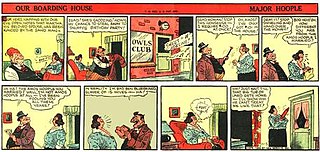 W
WOur Boarding House was an American single-panel cartoon and comic strip created by Gene Ahern on October 3, 1921 and syndicated by Newspaper Enterprise Association. Set in a boarding house run by the sensible Mrs. Hoople, it drew humor from the interactions of her grandiose, tall-tale-telling husband, the self-styled Major Hoople, with the rooming-house denizens and his various friends and cronies.
 W
WPaulus the woodgnome was a Dutch newspaper comic strip, which ran between 1946 and 1984. Its popularity inspired a series of children's novels, a radio series and a television puppet series. It was created by Jan van Oort, who personally made all adaptations of his work. Paulus was translated into German, English, Swedish and Japanese.
 W
WPopeye the Sailor is a fictional muscular American cartoon character created by Elzie Crisler Segar. The character first appeared in the daily King Features comic strip Thimble Theatre on January 17, 1929, and Popeye became the strip's title in later years. The character has also appeared in theatrical and television animated cartoons.
 W
WReg'lar Fellers was a long-running newspaper comic strip adapted into a feature film, a radio series on the NBC Red Network, and two animated cartoons. Created by Gene Byrnes (1889–1974), the comic strip offered a humorous look at a gang of suburban children. Syndicated from 1917 to January 18, 1949, Byrnes' strip was collected into several books. Branding also extended to such items as baseball bats and breakfast cereal.
 W
WRipley's Believe It or Not! is an American franchise, founded by Robert Ripley, which deals in bizarre events and items so strange and unusual that readers might question the claims. Originally a newspaper panel, the Believe It or Not feature proved popular and was later adapted into a wide variety of formats, including radio, television, comic books, a chain of museums and a book series.
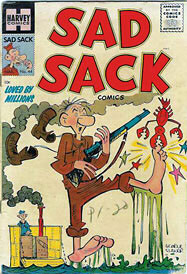 W
WSad Sack is an American comic strip and comic book character created by Sgt. George Baker during World War II. Set in the United States Army, Sad Sack depicted an otherwise unnamed, lowly private experiencing some of the absurdities and humiliations of military life. The title was a euphemistic shortening of the military slang "sad sack of shit", common during World War II. The phrase has come to mean "an inept person" or "inept soldier".
 W
WSecret Agent X-9 is a comic strip created by writer Dashiell Hammett and artist Alex Raymond. Syndicated by King Features, it ran from January 22, 1934 until February 10, 1996.
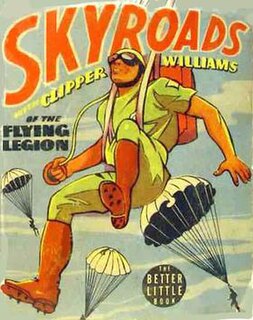 W
WSkyroads, a serialized aviation-based comic strip, was published from May 20, 1929, to 1942.
 W
WTom Corbett is the main character in a series of Tom Corbett—Space Cadet stories that were depicted in television, radio, books, comic books, comic strips, and other media in the 1950s.